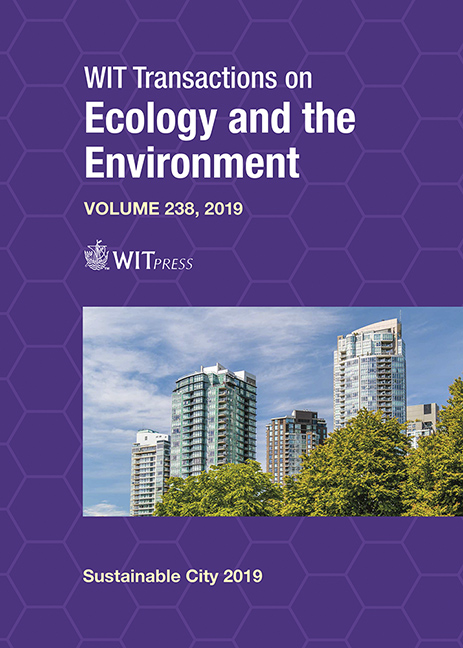RE-NATURALIZATION OF THE CITY OF BARCELONA, SPAIN: INTRODUCING GREENERY IN MEDITERRANEAN BUILDINGS
Price
Free (open access)
Transaction
Volume
238
Pages
9
Page Range
301 - 309
Published
2019
Paper DOI
10.2495/SC190271
Copyright
WIT Press
Author(s)
FABIOLA MEIGNEN, ANNA MARTÍNEZ, NURIA MARTÍ
Abstract
Nowadays, one of the main problems facing the city of Barcelona is climate change, which intensifies the urban heat island effect (UHI), as well as generating high levels of air and noise pollution. These environmental problems have a negative effect on the urban ecosystem and the living standards of its inhabitants. Greenery is able to counteract their effects, by capturing airborne dust, absorbing CO2, thus favouring better thermal regulation, increasing biodiversity and improving the quality of life of the population. This research intends to develop new forms of naturalization in Barcelona, introducing greenery not only in inhabited buildings in order to create long term benefits for the community, but also proposing new ways of constructing on top of the roof tops of existing buildings by means of industrialized attic flats. The majority of these penthouses are located in the Eixample District, the most crowded neighbourhood in the metropolitan area of Barcelona and the district which is probably most exposed to urban pollution. For this reason, the investigation seeks to innovate technical solutions that incorporate vegetation into the architectural projects of La Casa por el Tejado, taking benefit of the available surfaces such as roof-tops and party walls. The article will address different ways to implement greenery in La Casa por el Tejado’s projects through modular industrial solutions that require minimum maintenance and provide a study of benefits, opportunities and obstacles found in the application of vegetation, a description of the key factors to overcome these barriers, as well as how the implementation of greenery could introduce positives changes in the living dynamics of people and the city.
Keywords
greenery, vegetation, re-naturalization, intermediate spaces, Barcelona





